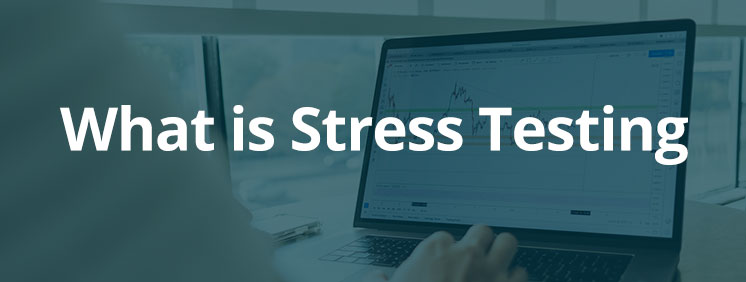
The Great Recession of 2008 showed us just how unprepared we all were for an economic downturn. Unfortunately, “we” also included billion-dollar investment banks that required bailouts in order to keep the economy running.
The “good” side to the Recession was getting the curtain pulled back as to how banks were running. Seeing the lack of preparedness the banks had taken made way for stronger regulations to better ensure this didn’t happen again. The 2010 Dodd-Frank Act helped put into place a set of regulations that forced companies to face the worst-case scenario head-on with the use of simulated forecasts called Stress Tests.
This article will cover what a stress test is, how it works, and the types of testing methods used today. Plus, we’ll also show you an excellent way to further develop your understanding of risk management and financial projecting so that you’re able to become a highly sought-after financial professional.
What is Stress Testing?
Stress testing is a method of financial forecasting that’s created via computer simulation. It’s the “worst-case scenario” test to determine how solvent banks and investment portfolios will be during an economic downturn or crash.
While it might seem like a non-essential, especially in times where the economy is strong, stress testing helps both the banks and government bodies like the Federal Reserve get a better picture of what could happen and how it could affect the overall stability of the financial world. In fact, it’s such a critical part of the solvency of our economy that the Fed requires it for all banks that operate with $100 billion or more in assets to prevent another “too big to fail” crisis from happening again.
“Stress” in these tests relates to capital adequacy and the ability of a bank to make it through a sharp economic decline. The results of these tests are then compiled into a Comprehensive Capital Analysis and Review (CCAR) and submitted to the Federal Reserve. These reports must follow specific criteria set by both the Fed and the International Monetary Fund.
How Does Stress Testing Work?
Stress testing relies heavily on historical data and computer analyses to determine how vulnerable an investment bank could be should another recession come around. There are currently three types of tests:
Historical Stress Testing
With historical tests, the bank’s assets are run through a simulation that’s based on past economic downturns to see how solvent the assets (and bank) would be until the next economic upturn. This includes events like the tech bubble burst at the turn of the 21st century, the Great Recession of 2008, and the stock market crash that occurred in 1987.
Hypothetical Stress Testing
Hypothetical tests are more specific and will focus on subjective issues an investment bank might face. For example, a bank in Florida may run hypothetical stress tests to see how it would fare should a hurricane destroy its branches while a bank in California might test against the damage which could be caused by wildfires or earthquakes.
During a hypothetical test, the process is as controlled as possible, with few variables being tested so that a compilation of tests can pull the most accurate data.
Simulated Stress Testing
Simulated stress tests involve modeling simulations based on things that cannot be prepared for ahead of time. You may have heard of a simulated event called the Monte Carlo Simulation, which is one of the standard methods to test solvency in a simulated test.
Simulated tests will determine probabilities based on either specific or random variables, as both have their benefits. Simulated stress tests can be outsourced to professional consultants who can run hundreds of variables and give their clients a more well-rounded understanding of how stable their business will run during an unexpected event.
Ready to Learn More?
Stress testing is a complex field that requires keen insights and a good understanding of probability and statistics. That’s why we offer the Risk Management Professional Certificate to help financial professionals like you get a holistic understanding of the risk of your business or clients’ business. Classes are run both in-person at our Manhattan center or virtually, so don’t miss your opportunity to develop your risk management skillset better.
Related Courses: Risk Management Professional Certificate
Develop a comprehensive survey of the practice of Risk Management. The major types of risk are identified, risk management tools and techniques are reviewed and financial regulation is covered. Delegates will work through the annual risk report of a publicly traded financial institution. A number of case studies are analyzed to illustrate key principles of risk measurement and management.
“There’s a lot of things you can learn about Finance in college, but there’s a lot you can do on your own. It’s a competitive environment, there are a lot of smart people so set yourself above from the competition by doing research and learning on your own.”
Linda
July 2019, Risk Management Professional Certificate
About The New York Institute of Finance
The New York Institute of Finance (NYIF) is a global leader in professional training for financial services and related industries. NYIF courses cover everything from investment banking, asset pricing, insurance and market structure to financial modeling, treasury operations, and accounting. The New York Institute of Finance has a faculty of industry leaders and offers a range of program delivery options, including self-study, online courses, and in-person classes. Founded by the New York Stock Exchange in 1922, NYIF has trained over 250,000 professionals online and in-class, in over 120 countries.
See all of NYIF’s training and qualifications here.





